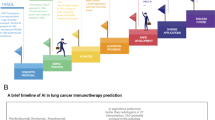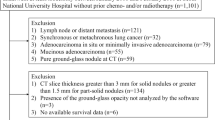Abstract
Cancer is one of the human’s life-threatening diseases that does not merely pertain to one organ. Despite the varieties of cancers, lung cancer, with its different growth and spreading mechanisms, can affect the normal cells and disrupt the cell signaling procedure that alters the cell division function. In this systematic review and meta-analysis, the well-known databases are searched based on a Boolean query exclusively for lung cancer and the corresponding artificial intelligent systems. By systematically searching the PubMed and Scopus databases, English-language articles published up to 13 July 2017 were extracted that identify the cancerous and normal cell images using different types of predictive models. Then, the search results will be selected for the pertinent articles encompassing the required information (i.e., inclusion criterion) such as total sample size, true positive, true negative, false positive, and false negative values. The studies without enough information were omitted from further analysis. Considering the lung cancer diagnosis and conducting the meta-analysis on the articles, the results for the improvement trends in the amount of success in the performance of the artificially intelligent systems have been reported. Eventually, two publication bias tests have shown that the possibility of publication bias exists. And, the trends on diagnostic odds ratio and AUC values were immeasurably high, respectively, while those of sensitivity and specificity were moderate.





Similar content being viewed by others
References
Barretina J, Caponigro G, Stransky N, Venkatesan K, Margolin AA, Kim S et al (2012) The cancer cell line encyclopedia enables predictive modeling of anticancer drug sensitivity. Nature 483(7391):603–607
Barrett T, Wilhite SE, Ledoux P, Evangelista C, Kim IF, Tomashevsky M et al (2013) NCBI GEO: archive for functional genomics data sets—update. Nucleic Acids Res 41(Database issue):D991–D995
Berlin JA (1995) Invited commentary: benefits of heterogeneity in meta-analysis of data from epidemiologic studies. Am J Epidemiol 142(4):383–387
Brazma A, Parkinson H, Sarkans U, Shojatalab M, Vilo J, Abeygunawardena N et al (2003) Arrayexpress—a public repository for microarray gene expression data at the EBI. Nucleic Acids Res 31(1):68–71
Bürkner P-C, Doebler P (2014) Testing for publication bias in diagnostic meta-analysis: a simulation study. Stat Med 33(18):3061–3077
Calin GA, Sevignani C, Dumitru CD, Hyslop T, Noch E, Yendamuri S et al (2004) Human microRNA genes are frequently located at fragile sites and genomic regions involved in cancers. Proc Natl Acad Sci USA 101(9):2999–3004
Cancer Genome Atlas Research Network (2008) Comprehensive genomic characterization defines human glioblastoma genes and core pathways. Nature 455(7216):1061–1068
Circelli L, Petrizzo A, Tagliamonte M, Tornesello ML, Buonaguro FM, Buonaguro L (2015) Systems biology approach for cancer vaccine development and evaluation. Vaccines 3(3):544–555
Deeks JJ, Macaskill P, Irwig L (2005) The performance of tests of publication bias and other sample size effects in systematic reviews of diagnostic test accuracy was assessed. J Clin Epidemiol 58(9):882–893
Diamantis A, Magiorkinis E, Androutsos G (2010) What’s in a name? Evidence that papanicolaou, not babes, deserves credit for the pap test. Diagn Cytopathol 38(7):473–476
Edgar R, Barrett T (2006) NCBI GEO standards and services for microarray data. Nat Biotechnol 24(12):1471–1472
Elizabeth DS, Nehemiah HK, Raj CSR, Kannan A (2012) Computer-aided diagnosis of lung cancer based on analysis of the significant slice of chest computed tomography image. IET Image Proc 6(6):697–705
Eriksen MB, Frandsen TF (2018) The impact of patient, intervention, comparison, outcome (PICO) as a search strategy tool on literature search quality: a systematic review. J Med Libr Assoc 106(4):420–431
Finley SD, Chu LH, Popel AS (2015) Computational systems biology approaches to anti-angiogenic cancer therapeutics. Drug Discov Today 20(2):187–197
Forbes SA, Bhamra G, Bamford S, Dawson E, Kok C, Clements J et al (2008) The catalogue of somatic mutations in cancer (COSMIC). Current protocols in human genetics/editorial board, Jonathan L Haines [et al]. Chapter: Unit-10.1
Gao J, Aksoy BA, Dogrusoz U, Dresdner G, Gross B, Sumer SO et al (2013) Integrative analysis of complex cancer genomics and clinical profiles using the cBioPortal. Sci Signal 6(269):pl1
Garnis C, Buys TPH, Lam WL (2004) Genetic alteration and gene expression modulation during cancer progression. Mol Cancer 3:9
Gopalakrishnan S, Ganeshkumar P (2013) Systematic reviews and meta-analysis: understanding the best evidence in primary healthcare. J Family Med Prim Care 2(1):9–14
Gutte H, Jakobsson D, Olofsson F, Ohlsson M, Valind S, Loft A et al (2007) Automated interpretation of PET/CT images in patients with lung cancer. Nucl Med Commun 28(2):79–84
Hamzeh-Mivehroud M, Sokouti B, Dastmalchi S (2015) An introduction to the basic concepts in QSAR-aided drug design .In: Quantitative structure–activity relationships in drug design, predictive toxicology, and risk assessment, pp 1–47
Huedo-Medina TB, Sanchez-Meca J, Marin-Martinez F, Botella J (2006) Assessing heterogeneity in meta-analysis: Q statistic or I2 index? Psychol Methods 11(2):193–206
Iorio MV, Croce CM (2012) MicroRNA dysregulation in cancer: diagnostics, monitoring and therapeutics: a comprehensive review. EMBO Mol Med 4(3):143–159
Jekunen A (2014) Clinicians’ expectations for gene-driven cancer therapy. Clin Med Insights Oncol 8:159–164
Ji W, Sun B, Su C (2017) Targeting microRNAs in cancer gene therapy. Genes 8(1):21
Kasinski AL, Slack FJ (2011) Epigenetics and genetics. MicroRNAs en route to the clinic: progress in validating and targeting microRNAs for cancer therapy. Nat Rev Cancer 11(12):849–864
Kota J, Chivukula RR, O’Donnell KA, Wentzel EA, Montgomery CL, Hwang HW et al (2009) Therapeutic microRNA delivery suppresses tumorigenesis in a murine liver cancer model. Cell 137(6):1005–1017
Liberati A, Altman DG, Tetzlaff J, Mulrow C, Gøtzsche PC, Ioannidis JPA et al (2009) The PRISMA statement for reporting systematic reviews and meta-analyses of studies that evaluate healthcare interventions: explanation and elaboration. PLoS medicine 6(7):e1000100
Liu X, Fang H, Chen H, Jiang X, Fang D, Wang Y et al (2012) An artificial miRNA against HPSE suppresses melanoma invasion properties, correlating with a down-regulation of chemokines and MAPK phosphorylation. PLoS ONE 7(6):e38659
Macgregor PF, Squire JA (2002) Application of microarrays to the analysis of gene expression in cancer. Clin Chem 48(8):1170–1177
Manikandan T, Bharathi N (2016) Lung cancer detection using fuzzy auto-seed cluster means morphological segmentation and SVM classifier. J Med Syst 40(7):181
McInnes MDF, Moher D, Thombs BD, McGrath TA, Bossuyt PM, Clifford T et al (2018) Preferred reporting items for a systematic review and meta-analysis of diagnostic test accuracy studies: the PRISMA-DTA statement. JAMA 319(4):388–396
Moher D, Liberati A, Tetzlaff J, Altman DG (2010) Preferred reporting items for systematic reviews and meta-analyses: the PRISMA statement. Int J Surg 8(5):336–341
Nayar R, Wilbur DC (2015) The pap test and bethesda 2014. Cancer Cytopathol 123(5):271–281
Ronald JA, D’Souza AL, Chuang HY, Gambhir SS (2016) Artificial microRNAs as novel secreted reporters for cell monitoring in living subjects. PLoS ONE 11(7):e0159369
Schrack JA, Gresham G, Wanigatunga AA (2017) Understanding physical activity in cancer patients and survivors: new methodology, new challenges, and new opportunities. Mol Case Stud 3(4):a001933
Sokouti M, Sokouti B (2016) Artificial intelligent systems application in cervical cancer pathological cell image classification systems—a review. Biomed Eng Appl Basis Commun 28(02):1630001
Sokouti M, Sokouti B (2019) Applying the science of systematic review and meta-analysis to retrospective artificial intelligence based studies: the importance of performance evaluation. Pak J Med Health Sci 13(1):1–2
Sokouti B, Haghipour S, Tabrizi AD (2012) A pilot study on image analysis techniques for extracting early uterine cervix cancer cell features. J Med Syst 36(3):1901–1907
Sokouti B, Haghipour S, Tabrizi AD (2014) A framework for diagnosing cervical cancer disease based on feedforward MLP neural network and ThinPrep histopathological cell image features. Neural Comput Appl 24(1):221–232
Sokouti B, Rezvan F, Dastmalchi S (2015) Applying random forest and subtractive fuzzy c-means clustering techniques for the development of a novel G protein-coupled receptor discrimination method using pseudo amino acid compositions. Mol BioSyst 11(8):2364–2372
Sokouti M, Sokouti M, Sokouti B (2018) The role of biomarker genes in the diagnosis and treatment of nonsmall cell lung cancer. Curr Respir Med Rev 14(3):142–148
Taher F, Werghi N, Al-Ahmad H (eds) (2015) Computer aided diagnosis system for early lung cancer detection. In: 2015 international conference on systems, signals and image processing (IWSSIP)
Velazquez RE, Parmar C, Liu Y, Coroller TP, Cruz G, Stringfield O et al (2017) Somatic mutations drive distinct imaging phenotypes in lung cancer. Can Res 77(14):3922–3930
Wang B, Akiba U, Anzai J-i (2017a) Recent progress in nanomaterial-based electrochemical biosensors for cancer biomarkers: a review. Molecules 22(7):1048
Wang H, Zhou Z, Li Y, Chen Z, Lu P, Wang W et al (2017b) Comparison of machine learning methods for classifying mediastinal lymph node metastasis of non-small cell lung cancer from (18)F-FDG PET/CT images. EJNMMI Res 7:11
Wei WJ, Shen CT, Song HJ, Qiu ZL, Luo QY (2016) MicroRNAs as a potential tool in the differential diagnosis of thyroid cancer: a systematic review and meta-analysis. Clin Endocrinol 84(1):127–133
Werner HM, Mills GB, Ram PT (2014) Cancer systems biology: a peek into the future of patient care? Nat Rev Clin Oncol 11(3):167–176
Wu Y, Na W, Zhang H, Lijuan Q, Yan Z, Wu Y (eds) (2010) Application of artificial neural networks in the diagnosis of lung cancer by computed tomography. In: 2010 Sixth international conference on natural computation
Zamora J, Abraira V, Muriel A, Khan K, Coomarasamy A (2006) Meta-DiSc: a software for meta-analysis of test accuracy data. BMC Med Res Methodol 6:31
Zhang J, Baran J, Cros A, Guberman JM, Haider S, Hsu J et al (2011) International cancer genome consortium data portal—a one-stop shop for cancer genomics data. Database J Biol Databases Curation 2011:bar026
Author information
Authors and Affiliations
Corresponding author
Additional information
Publisher's Note
Springer Nature remains neutral with regard to jurisdictional claims in published maps and institutional affiliations.
Rights and permissions
About this article
Cite this article
Sokouti, M., Sokouti, M. & Sokouti, B. A systematic review and meta-analysis on performance of intelligent systems in lung cancer: Where are we?. Artif Intell Rev 53, 3287–3298 (2020). https://doi.org/10.1007/s10462-019-09764-x
Published:
Issue Date:
DOI: https://doi.org/10.1007/s10462-019-09764-x




